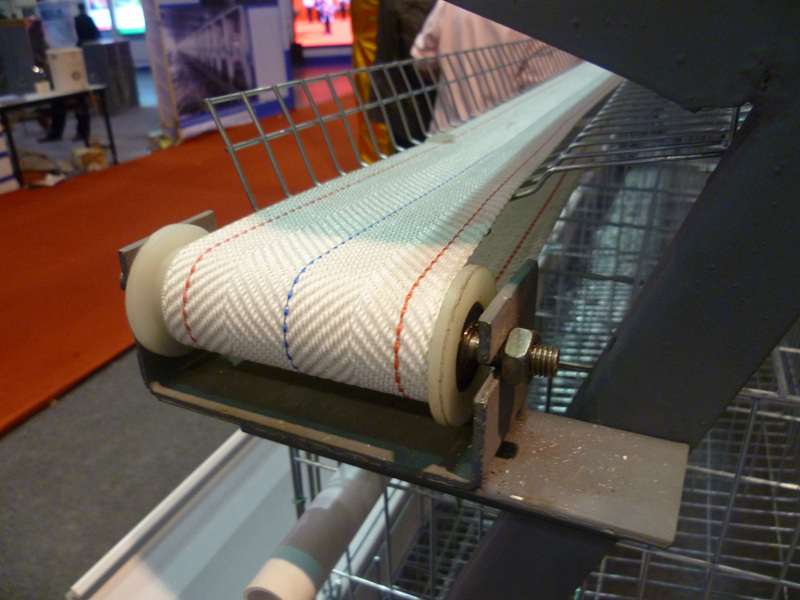automatic broiler chicken cage
Nov . 14, 2024 10:39 Back to list
automatic broiler chicken cage
The Advancement of Automatic Broiler Chicken Cages
In the realm of modern agriculture, the poultry industry has undergone significant transformations, particularly in the way we raise broiler chickens. The introduction of automatic broiler chicken cages represents a crucial advancement aimed at enhancing productivity, improving animal welfare, and ensuring biosecurity. This article explores the various aspects of automatic broiler chicken cages, including their design, benefits, and the impact they have on the poultry industry.
Design and Functionality
Automatic broiler chicken cages are engineered systems designed to house chickens in a confined and controlled environment. Typically, these cages are constructed using durable materials such as galvanized steel and are equipped with various automated features. Key components include automatic feeding systems, drinking systems, climate control, and waste management systems.
The automatic feeding system ensures that chickens receive an adequate and consistent supply of feed, minimizing labor costs and enhancing feed efficiency. Automated drinking systems provide fresh water, promoting better health and growth rates among the birds. Furthermore, integrated climate control systems maintain optimal temperature and humidity levels, which are crucial for the well-being and productivity of broiler chickens.
Waste management is another critical feature of automatic cages. Many systems incorporate manure belts or augers that automatically remove waste, thereby reducing labor requirements and helping maintain a cleaner living environment for the chickens. This process not only simplifies farm management but also contributes to improved biosecurity by minimizing the risk of disease transmission.
Benefits of Automatic Broiler Chicken Cages
The adoption of automatic broiler chicken cages offers numerous benefits that significantly impact both farmers and consumers. One of the primary advantages is increased productivity. By automating labor-intensive tasks, farmers can focus on other important aspects of their operations, such as flock health and market trends. This efficiency often leads to higher production rates, allowing farmers to meet the growing demand for poultry products.
automatic broiler chicken cage

Another significant benefit is improved animal welfare. With features like regulated feeding and climate control, automatic cages create an environment conducive to the health and growth of broiler chickens. Modern designs also allow for better space utilization, ensuring that chickens have adequate room to move and display natural behaviors. Reducing stress in animals can lead to better feed conversion rates and, ultimately, higher quality meat for consumers.
Moreover, automatic broiler chicken cages play a vital role in biosecurity. The enclosed nature of these systems limits the exposure of chickens to external pathogens, decreasing the likelihood of disease outbreaks. Additionally, automated cleaning systems reduce the risk of human-induced contamination, further enhancing the overall health status of the flock.
Economic Impact
From an economic perspective, automatic broiler chicken cages can significantly lower operational costs. While the initial investment may be substantial, the long-term savings realized through reduced labor costs, improved feed efficiency, and enhanced flock performance often make these systems financially viable. Many farmers report a rapid return on investment as a result of increased production and lower mortality rates.
Furthermore, the scalability of automatic systems allows small and large poultry operations alike to benefit from these advancements. Technological innovations in cage design can cater to various farm sizes, promoting sustainability and efficiency across the industry.
Conclusion
The evolution of the poultry industry through advancements such as automatic broiler chicken cages reflects a growing commitment to efficiency, animal welfare, and biosecurity. As global demand for poultry continues to rise, these innovative systems provide practical solutions for producing high-quality meat while addressing concerns about sustainability and ethical farming practices.
In summary, automatic broiler chicken cages are not just a trend but a significant movement towards modernizing poultry farming. By embracing technology, farmers can enhance productivity, improve animal welfare, and contribute to a more sustainable agricultural future. As we look ahead, the continued development of such systems will be critical in meeting the demands of consumers and ensuring the well-being of livestock.
-
Automatic Feeding Line System-Pan Feeder Nipple Drinker|Anping County Yize Metal Products Co., Ltd.
NewsJul.29,2025
-
Hot Sale 24 & 18 Door Rabbit Cages - Premium Breeding Solutions
NewsJul.25,2025
-
Automatic Feeding Line System Pan Feeder Nipple Drinker - Anping County Yize Metal Products Co., Ltd.
NewsJul.21,2025
-
Automatic Feeding Line System Pan Feeder Nipple Drinker - Anping County Yize Metal Products Co., Ltd.
NewsJul.21,2025
-
Automatic Feeding Line System - Anping Yize | Precision & Nipple
NewsJul.21,2025
-
Automatic Feeding Line System - Anping Yize | Precision & Nipple
NewsJul.21,2025






